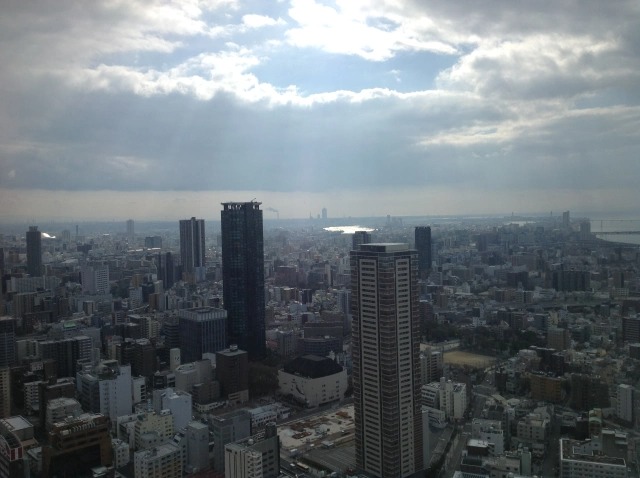
It’s a great place to live, but I wouldn’t want to visit there.
We recently reported on the Global Livability Index, compiled by British media giant The Economist Group, in which Osaka came in 10th and was the only Japanese city to breach the top 10. While this was great news to many, there were few out there who questioned the results, calling Osaka “grimy,” “not having a good reputation,” and “full of murder.”
To all those people, I must first say: How dare you!? And then I must add that having lived in Osaka for over 15 years, I can say that they couldn’t be further from the truth…well, except for that murder thing, but I’ll get to that in a minute.
So, what makes Osaka such a gosh-darn livable city, anyway? Well, I have lived here quite a while, and as of this writing am still very much not dead. I rest my case.
▼ Exhibit A: Me, alive
Still, I can imagine you reading this and thinking, “But I live here in Walla Walla, Washington, and I too am not dead…”
You raise a valid point, so let’s delve a little deeper into what exactly makes Osaka such a great place to live.
● It’s safe!
Japan frequently makes international news for its natural disasters, such as typhoons, earthquakes, and heavy rains. The country itself is quite disaster prone, but these events rarely occur in Osaka to any significant degree. In all the years I lived here, there was only one time a typhoon hit that I would call a real typhoon disaster, rather than just above-average wind and rain.
It’s almost as if the place is surrounded by an invisible force field, except that it’s very visible and made of mountains.
▼ Most skyline images of Osaka will have a line of mountains in the distant background
Back before Tokyo, before Kyoto, and even before Nara, Osaka was once the capital of Japan and where the Emperor resided. Even back then they knew the mountains that surrounded the area provided excellent defense from both nature and invading forces.
It worked so well that the area prospered and the population grew, so the nobility decided to move to a similarly enclosed but smaller area in Nara and allow Osaka to become a spacious hub of production and commerce, a characteristic that the city still embodies to this day.
▼ You can seen the layout of mountains in this map by their thick tree coverage
Granted, the murder rate is high, but it’s not like there are murderous bands of road warriors out there killing indiscriminately. Statistics often show that unless you’re involved in war or organized crime, you’re more likely to be murdered by someone you know than a stranger, which brings me to my next point.
● It’s friendly!
As I mentioned, Osaka was very much a merchant class area for much of history, and this still shows in the culture today. The number one rule of business is that it’s not what you know but who you know, so it pays to know as many people as you can.
I like to think that’s why people in Osaka are more forward than people in other parts of the country. Normally in big cities people tend to be stand-offish and mind their own business, and that can be seen to some degree here too, but I feel the opposite — total strangers getting involved in other people’s business — is a much more common occurrence here than anywhere else.
▼ This is even in spite of many residents’ trying to blend in by wearing camouflage patterns
Some examples that spring to mind include times that I play Pokémon GO, which involves walking around and finding Pokémon with a map on my smartphone. In doing that I occasionally get stopped out of the blue by people on the street asking if I’m lost and need directions. I then have to explain that I’m not lost, but am merely searching for imaginary monsters.
Other times, I’ll just be stopped by an elderly person who wants to chat for about five minutes about whatever’s on their mind, but usually before they go on their way, they will give me food for no reason at all. I’m not talking about cookies or candies either — though sometimes it is candy — they give me whole meals sometimes, right there on the street and with no strings attached.
▼ This kind of behavior is perhaps best encapsulated in the classic short Osaka no Obahan video
Of course, the main reason for this is probably just being nice, but I think this level of intrusive niceness is rather unique to Osaka, because there is a culturally deep-rooted business mindset that connections with people is a currency, whether it’s just karmic or the fact that I will feel indebted to them at some point down the line.
I think this way because the kindness of people in Osaka is equaled only by their blunt shrewdness in matters of business.
● It’s cheap!
Of course, these days the most important factor of livability is being able to afford food and shelter, and Osaka’s got some great deals on both!
It is a big city and has its fair share of expensive homes and condos, but I once rented an apartment that was about a three-minute walk from a major train station and only cost me 27,000 yen a month (US$198). Of course, it wasn’t the nicest room in the world, but it was hardly a flophouse either…though that might be saying more about my own standards than anything.
There’s also a long history of wheeling and dealing here that’s ingrained in the culture, and my wife who was born and raised in Osaka won’t hesitate to negotiate even at big-box retail chains if she feels she’s got an angle on them.
Local businesses, meanwhile, tend to be well aware of this and will cut to the chase by offering big discounts in advance. Walking down the street I’ll often see stores that have large “SALE!” signs in their window 24 hours a day, seven days a week, 365 days a year.
▼ Osaka’s most famous supermarket chain, Super Tamade, has a never-ending one-yen ($0.007) sale on certain items.
Even vending machines here appeal to residents’ thrifty tendencies, offering drinks for 80, 50, and even 10 yen at times.
▼ 10-yen and 50-yen machines
● M. Night Shyamalan eat your heart out!
Safe, cheap, and friendly are certainly key factors to consider when judging how livable a place is, so surely you can now see why Osaka is definitely worth considering to settle down in. However, the big twist ending to this article is that none of the things I just mentioned were even factored into The Economist Group’s Index, and Osaka still ranked in the top 10!
As we mentioned last time, the Index is based on five general factors; Stability, Healthcare, Culture & Environment, Education, and Infrastructure. Those are kind of vague, so here’s the sub-categories for each one.
Stability
Prevalence of crime, prevalence of violent crime, threat of terror, threat of military conflict, threat of civil unrest
Healthcare
Availability of private healthcare, quality of private healthcare, availability of public healthcare, quality of public healthcare, availability of over-the-counter-drugs, general healthcare indicators
Culture & Environment
Humidity/temperature rating, discomfort of climate for travelers, level of corruption, social or religious restrictions, level of censorship, sporting availability, cultural availability, food and drink, consumer goods and services
Education
Availability of private education, quality of private education, public education indicators
Infrastructure
Quality of road network, quality of public transport, quality of international links, availability of good-quality housing, quality of energy provision, quality of water provision, quality of telecommunications
It’s hard to speak objectively on a lot of these factors compared with other cities, but having gone through two surgeries and the birth of two children, I can say that healthcare is both good in quality and relatively affordable. Public transportation is pretty solid as well, since I can get pretty much anywhere I need to be by train and/or bus, including two major airports that are both easily accessible.
There’s also absolutely a great deal of cultural availability in the form of comedy, music, and sports.
▼ You want art? We got your art right here!
So, it’s still no surprise, to me at least, that Osaka was ranked as highly as it was and is the most livable city in the world…next to Vienna, Copenhagen, Zurich, Calgary, Vancouver, Geneva, Frankfurt, Toronto, Amsterdam, Melbourne, and the potentially hundreds of other cities worldwide not among the 172 included in the ranking this year.
I hope I helped you feel that same way, but if not, would a super fun slide sweeten the deal?
Photos ©SoraNews24
● Want to hear about SoraNews24’s latest articles as soon as they’re published? Follow us on Facebook and Twitter!

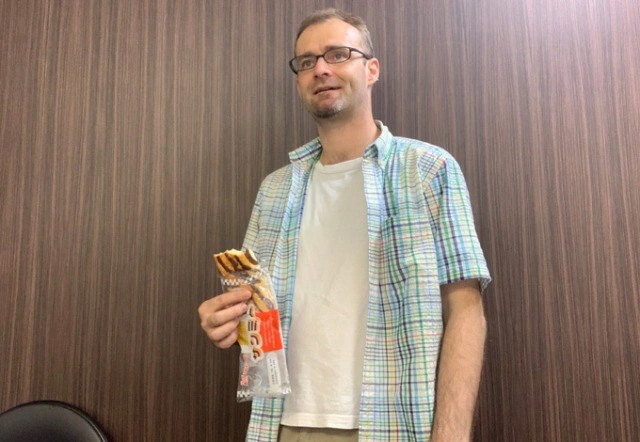
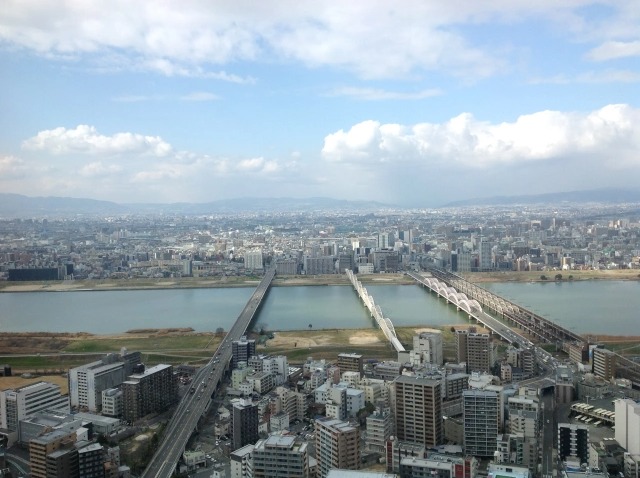

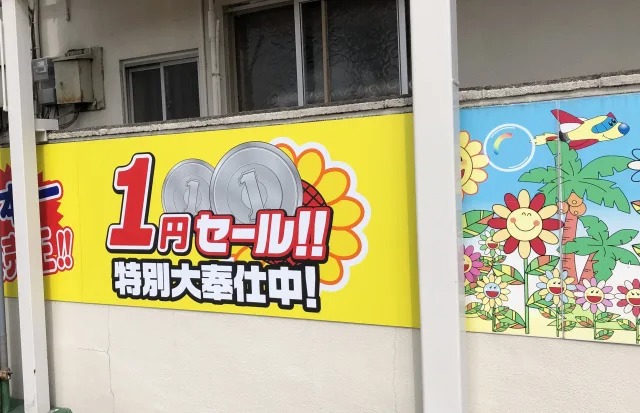
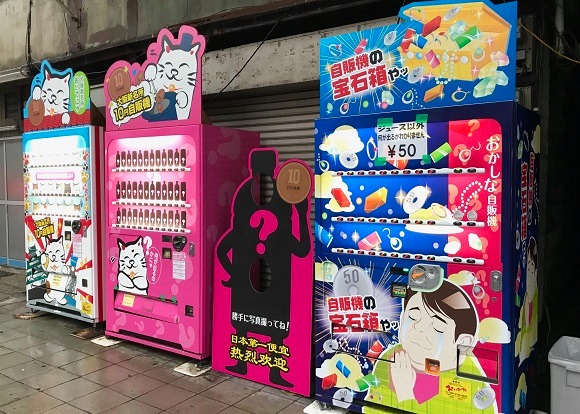

 Japanese city makes list of world’s top 10 most livable cities, but not one most people expected
Japanese city makes list of world’s top 10 most livable cities, but not one most people expected Japanese net users react to the results of the 2018 Global Liveability Index
Japanese net users react to the results of the 2018 Global Liveability Index Data shows Fukui Prefecture may be the best place to live in Japan, but survey results differ
Data shows Fukui Prefecture may be the best place to live in Japan, but survey results differ Thousands oppose Osaka Metro’s plan to change major stations in giant boats and fabric swatches
Thousands oppose Osaka Metro’s plan to change major stations in giant boats and fabric swatches Japan second-most popular country to move to according to Google Search analysis
Japan second-most popular country to move to according to Google Search analysis Studio Ghibli unveils new goods that tip the hat to The Cat Returns
Studio Ghibli unveils new goods that tip the hat to The Cat Returns Starbucks at Shibuya Scramble Crossing reopens, but is it really bigger and better than before?
Starbucks at Shibuya Scramble Crossing reopens, but is it really bigger and better than before? Bad tourist manners at Mt Fuji Lawson photo spot prompts Japanese town to block view with screens
Bad tourist manners at Mt Fuji Lawson photo spot prompts Japanese town to block view with screens One of Japan’s oldest castles now lets travelers spend night on the grounds, drink in its keep
One of Japan’s oldest castles now lets travelers spend night on the grounds, drink in its keep Orange Juice Crisis ’24 – Japan’s OJ supplies drying up
Orange Juice Crisis ’24 – Japan’s OJ supplies drying up Foreign traveler caught trying to sneak into Japan by climbing down rope from cruise ship
Foreign traveler caught trying to sneak into Japan by climbing down rope from cruise ship Two things to do, and two things not to do, when leaving a traditional Japanese inn
Two things to do, and two things not to do, when leaving a traditional Japanese inn Studio Ghibli unveils massive T-shirt collection featuring top anime movie characters
Studio Ghibli unveils massive T-shirt collection featuring top anime movie characters All-you-can-drink Starbucks and amazing views part of Tokyo’s new 170 meter-high sky lounge
All-you-can-drink Starbucks and amazing views part of Tokyo’s new 170 meter-high sky lounge McDonald’s Japan’s new pancake pie is a taste sensation
McDonald’s Japan’s new pancake pie is a taste sensation Foreigner’s request for help in Tokyo makes us sad for the state of society
Foreigner’s request for help in Tokyo makes us sad for the state of society Red light district sushi restaurant in Tokyo shows us just how wrong we were about it
Red light district sushi restaurant in Tokyo shows us just how wrong we were about it Japanese city loses residents’ personal data, which was on paper being transported on a windy day
Japanese city loses residents’ personal data, which was on paper being transported on a windy day McDonald’s new Happy Meals offer up cute and practical Sanrio lifestyle goods
McDonald’s new Happy Meals offer up cute and practical Sanrio lifestyle goods Japanese ramen restaurants under pressure from new yen banknotes
Japanese ramen restaurants under pressure from new yen banknotes Ghibli Park now selling “Grilled Frogs” from food cart in Valley of Witches
Ghibli Park now selling “Grilled Frogs” from food cart in Valley of Witches New definition of “Japanese whiskey” goes into effect to prevent fakes from fooling overseas buyers
New definition of “Japanese whiskey” goes into effect to prevent fakes from fooling overseas buyers Our Japanese reporter visits Costco in the U.S., finds super American and very Japanese things
Our Japanese reporter visits Costco in the U.S., finds super American and very Japanese things More foreign tourists than ever before in history visited Japan last month
More foreign tourists than ever before in history visited Japan last month New Pokémon cakes let you eat your way through Pikachu and all the Eevee evolutions
New Pokémon cakes let you eat your way through Pikachu and all the Eevee evolutions Disney princesses get official manga makeovers for Manga Princess Cafe opening in Tokyo
Disney princesses get official manga makeovers for Manga Princess Cafe opening in Tokyo French Fries Bread in Tokyo’s Shibuya becomes a hit on social media
French Fries Bread in Tokyo’s Shibuya becomes a hit on social media Sales of Japan’s most convenient train ticket/shopping payment cards suspended indefinitely
Sales of Japan’s most convenient train ticket/shopping payment cards suspended indefinitely Sold-out Studio Ghibli desktop humidifiers are back so Totoro can help you through the dry season
Sold-out Studio Ghibli desktop humidifiers are back so Totoro can help you through the dry season Japanese government to make first change to romanization spelling rules since the 1950s
Japanese government to make first change to romanization spelling rules since the 1950s Ghibli founders Toshio Suzuki and Hayao Miyazaki contribute to Japanese whisky Totoro label design
Ghibli founders Toshio Suzuki and Hayao Miyazaki contribute to Japanese whisky Totoro label design Doraemon found buried at sea as scene from 1993 anime becomes real life【Photos】
Doraemon found buried at sea as scene from 1993 anime becomes real life【Photos】 Tokyo’s most famous Starbucks is closed
Tokyo’s most famous Starbucks is closed One Piece characters’ nationalities revealed, but fans have mixed opinions
One Piece characters’ nationalities revealed, but fans have mixed opinions We asked a Uniqlo employee what four things we should buy and their suggestions didn’t disappoint
We asked a Uniqlo employee what four things we should buy and their suggestions didn’t disappoint Cup Noodle in hot water once again for unflattering Grand Slam support ad
Cup Noodle in hot water once again for unflattering Grand Slam support ad Naomi Osaka stirs up debate about what it means to be Japanese following U.S. Open victory
Naomi Osaka stirs up debate about what it means to be Japanese following U.S. Open victory Osaka elementary school becomes first in Japan to have a police box established on campus
Osaka elementary school becomes first in Japan to have a police box established on campus Which Japanese prefecture buys the most leopard print clothes?
Which Japanese prefecture buys the most leopard print clothes? Japanese politician apologizes to prime minister for calling wife’s cooking “Hiroshima-yaki”
Japanese politician apologizes to prime minister for calling wife’s cooking “Hiroshima-yaki” Survey finds that Osaka people don’t eat takoyaki octopus balls as much as you’d think
Survey finds that Osaka people don’t eat takoyaki octopus balls as much as you’d think Typhoon Jebi hits too close to home, wreaks havoc on my Osaka neighborhood【Videos】
Typhoon Jebi hits too close to home, wreaks havoc on my Osaka neighborhood【Videos】 Thinking about moving to Nara? Here are eight things that may surprise you!
Thinking about moving to Nara? Here are eight things that may surprise you! Upcoming escape game in Osaka pits players against Whity with only a 1% chance of success
Upcoming escape game in Osaka pits players against Whity with only a 1% chance of success Japanese subway conductor sues city for legal right for his beard to exist, monetary compensation
Japanese subway conductor sues city for legal right for his beard to exist, monetary compensation How much has changed in Japan one week after Naomi Osaka’s victory in the 2018 U.S. Open?
How much has changed in Japan one week after Naomi Osaka’s victory in the 2018 U.S. Open? Osaka World Expo “Fist” statue stirs controversy for being “incredibly gaudy”
Osaka World Expo “Fist” statue stirs controversy for being “incredibly gaudy” Super cheap apartment in Japan has a steamy past, free water
Super cheap apartment in Japan has a steamy past, free water Japan’s random-destination roll-the-die train tickets: An amazingly cheap way to go…somewhere
Japan’s random-destination roll-the-die train tickets: An amazingly cheap way to go…somewhere Sandwiches fit for a sumo served up in Osaka【Taste Test】
Sandwiches fit for a sumo served up in Osaka【Taste Test】 Hiyoriyama newly crowned as Japan’s Shortest Mountain
Hiyoriyama newly crowned as Japan’s Shortest Mountain Bones of over 1,500 people found at Osaka Station area construction site
Bones of over 1,500 people found at Osaka Station area construction site
Leave a Reply